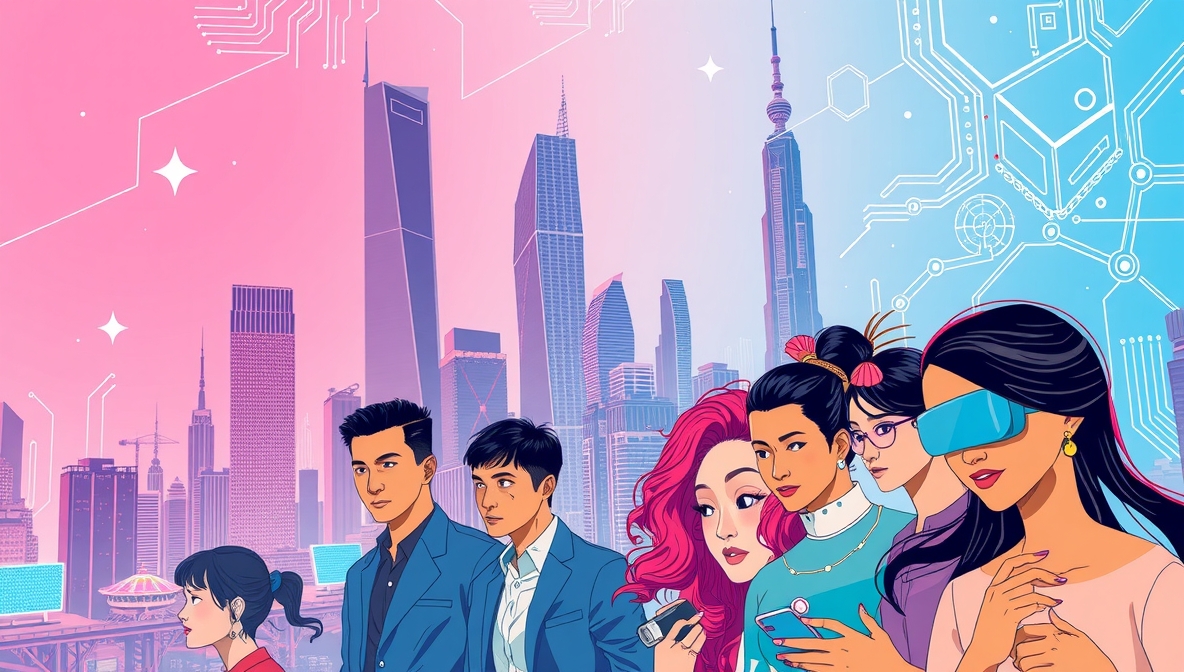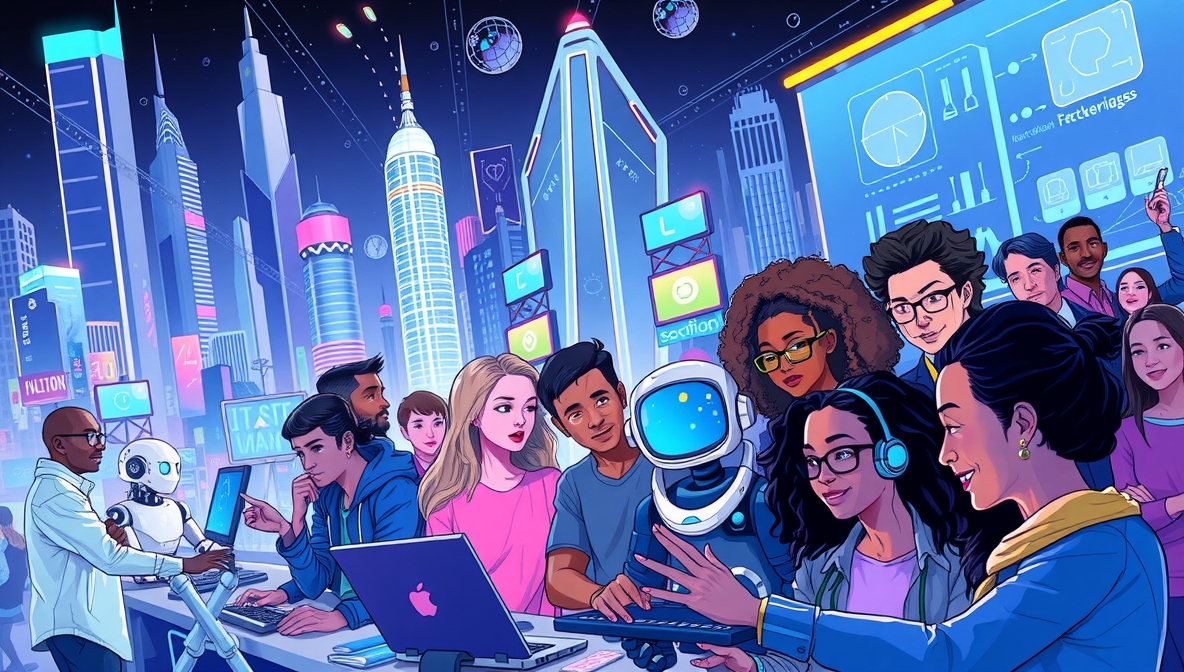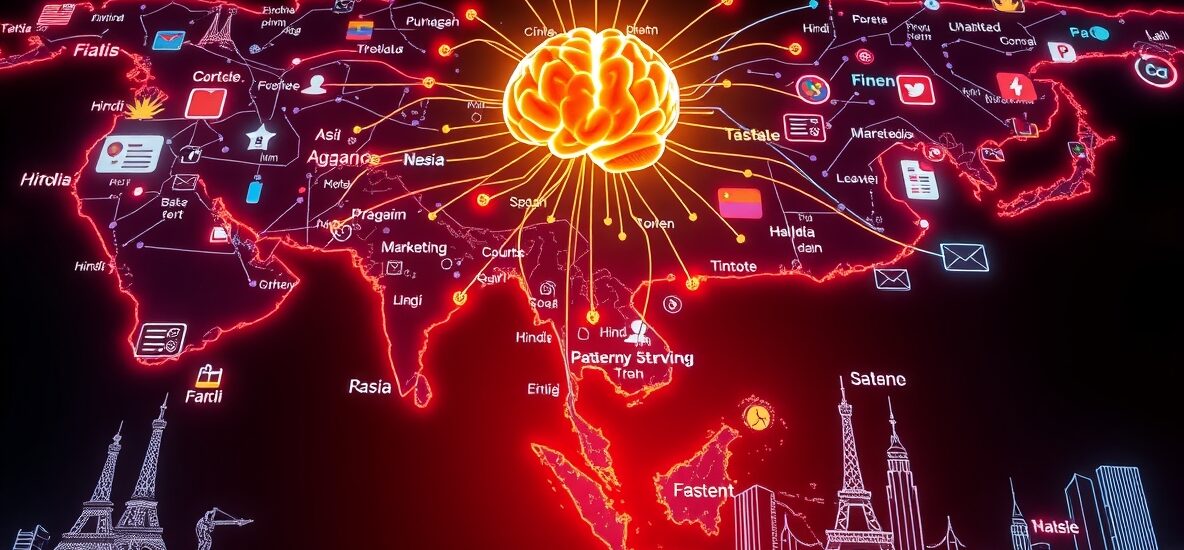Vision and Vigor in Asia’s AI Content Revolution
Asia’s digital markets are roaring, and AI‑powered content generation sits at the epicenter. The fusion of AI Development Services and AI Marketing is no longer future talk—it’s today’s mandate. Companies across Asia are racing to localize messaging for millions but strategizing to scale globally. India’s linguistic expanse, Southeast Asia’s multicultural marketplaces, and China’s tech mammoths are all converging under one truth: content must be culturally grounded and industrially scalable. Whether you’re a brand launching regionally or aiming globally from day one, the key lies in building tailor‑made AI workflows that speak local nuance and amplify global resonance.
In this blog, we’ll walk that tightrope—from specialized AI strategies attuned to cultural complexity to infrastructure and tactics enabling reach across borders. We’ll unpack how AI Development Services shape enterprise-grade pipelines grounded in localized context, and how AI Marketing transforms that raw potential into meaningful engagement. Expect case insights from regional innovators, regulatory challenges, tech ecosystems, and growth models that fuse grit with strategy.

Asia’s Generative AI Surge: Market Forces and Emerging Trends
The wave has arrived. A Deloitte study reports GenAI uptake across Asia‑Pacific is roughly 30% higher than in developed markets, and employees use tools that save nearly a day each week in productivity. Asia’s generative AI content creation market is accelerating at a compound annual rate north of 30%, with software leading the charge and text generation commanding the largest share.
In many developing APAC economies, adoption is already mainstream—students and professionals lead the charge, while many enterprises lag behind. Government-backed LLMs, regional language models, and local AI firms are reclaiming narrative control from Western‑centric frameworks. Analysts predict that by the end of 2025, 60% of APAC enterprises will roll out regionally‑trained language models to address multilingual and regulatory complexity.
These dynamics create fertile ground for AI Development Services, offering region‑specific fine‑tuning, API integration, voice agents, and translation pipelines. On the AI Marketing front, brands harness these capabilities to launch hyperlocalized campaigns at scale—ad creatives, blog content, and even AI‑generated video that aligns with regional ethos. The synergy between tech development and marketing isn’t optional—it’s survival.

Localization‑First Strategy: Dialects, Culture, Context
“Translate” is not enough. Asia comprises hundreds of languages, idioms, and cultural contexts. Players like Sarvam AI emerged with purpose—building LLMs fine‑tuned for Hindi, Tamil, Kannada, Bengali and more, understanding idiomatic speech and multilingual switching patterns. Southeast Asia is forging benchmarks—SEACrowd consolidates datasets covering nearly 1,000 SEA languages across text, audio, and images to ensure AI understands regional nuance.
Localization‑first means AI pipelines that blend machine suggestion with human-guided post‑editing. Tools like OneSky’s Localization Agent orchestrate machine translation, QA, and developer workflows automatically—ideal for AI Development Services that need to integrate localization into content CI/CD flows. Platforms like Lokalise choose the best AI engine per language pair and content type, orchestrating workflows for mobile, web, and marketing channels at scale.
On the AI Marketing side, brands use AI to auto‑generate visual creatives, captions, and ad copy tailored to regional preferences. Typeface’s AI-powered localization picks up tone, slang, even cultural symbolism, converting a single creative into dozens of market‑specific variations instantly. Combined, these strategies deliver content that speaks local truth while reinforcing brand voice consistently—core to any durable global scaling playbook.

Innovation Hubs and AI Storytelling Powerhouses
Asia isn’t just adopting AI; it’s building it. In China, companies like ByteDance are pushing text‑to‑video tools that generate ads and animations from scripts and images, dramatically lowering production costs and raising creativity ceilings. Meanwhile, COL Group’s “Xiaoyao.ai” LLM can generate 10,000‑word novels from a single image in seconds—used for AI‑anime shorts and serialized digital creative content.
India’s Sarvam AI recently raised US $41M and was selected by the government as part of IndiaAI Mission to develop a sovereign LLM for local languages, backed by thousands of dedicated GPUs and infrastructure within India. Startup ecosystems from Singapore, Shenzhen, Jakarta and Bengaluru are converging on similar models—focusing on AI Development Services built for local enterprises, governments, and content creators to be digitally sovereign.
For marketers, tools like Kling AI’s anthology “Loading…” illustrate the power of AI story generation at scale: a seven-part science‑fiction epic created via machine‑assisted narratives and visual generation, demonstrating what AI can do when wielded by bold creative teams. These advances exemplify how cutting‑edge infrastructure and storytelling ambition combine—ideal grounds for firms seeking robust AI content production services and next‑level AI Marketing campaign deployment.

Building Scalable Ecosystems: Tech, Infrastructure & Governance
Delivering localized AI at global scale demands industrial-grade infrastructure. Enterprises must architect MLOps pipelines that ingest multilingual training data, segment by region, run post‑generation QA, push content through CMS integrations, and trigger marketing campaigns—all orchestrated automatically. AI Development Services firms now offer modular AI microservices: translation, voice‑cloning, visual adaptation, sentiment tuning, output watermarking.
Edge deployment plays a growing role. In markets with connectivity constraints or sovereignty concerns, companies deploy on‑device models—on phones or government data centers—to ensure speed and compliance. Chinese firms and regional telecom operators are testing these, balancing latency, privacy, and regulatory transparency. Government frameworks in Asia champion state‑guided rollout: adaptive AI rules, algorithm registration, watermarking protocols.
Training regional teams is critical. AI Development Services providers are investing in developer upskilling, local data curation, and AI literacy programs. Marketing teams are upskilling in AI Marketing methodologies—understanding prompt engineering, creative generation workflows, performance testing, ethical guardrails, and consumer trust signals.
The result? A growing ecosystem where AI can generate, adapt, localize, and market content fluidly: code‑first infrastructure meets culturally nuanced storytelling. Brands that invest in this stack—tech governance, data infrastructure, localization pipelines, agent deployment—can deploy global‑scale campaigns with local resonance while staying compliant and efficient.

Ethical AI, Regulation & Responsible Governance
Asia’s AI race comes with scrutiny. China’s top‑down strategy includes interim rules for generative AI watermarking, algorithm registration, and publisher guidelines; India is moving toward mandatory disclosures in academic and public AI use cases; Singapore and South Korea are drafting adaptive governance frameworks.
At IIT Delhi, a committee recommended AI‑use disclosure, training programs, and revamped plagiarism policies to manage generative AI adoption ethically in education—where 80% of students and 77% of faculty were already using GenAI tools. UNESCO and regional bodies emphasize the perils of cultural bias in AI education models, noting that historical Western‑centric training data can distort narratives in Asia unless addressed.
For providers of AI Development Services, these realities demand built‑in transparency: watermarking outputs, logging prompt history, enabling model audits, and ensuring data privacy. AI Marketing teams need to avoid deceptive messaging—particularly after the rise of distrust around purely AI‑generated influencers and content that lacks human authenticity.
Responsible strategies include mix‑mode generation (AI draft plus human review), brand‑aligned creative guardrails, transparency disclosures (“AI‑assisted”), and bias mitigation training. Ethical readiness becomes not merely compliance—but a differentiator in building consumer trust and long‑term brand equity.

Scaling from Local to Global: Tactics That Work
You’ve built locally resonant campaigns. Now, how do you scale globally without losing nuance? Here’s the blueprint:
- Design central content templates: core messaging, tone, brand pillars—then layer local voice with AI‑assisted tuning per language or region.
- Build a content flow: generate local drafts, human-polish, then syndicate across channels. AI Marketing tools can auto‑adapt visuals, captions, hashtags, ad versions to fit regional metrics and platforms.
- Maintain creative guardrails: style guidelines baked into prompts, paired with review loops to keep brand voice consistent across markets.
Examples abound: a regional campaign in India, crafted via Sarvam AI–powered Ad copy plus localized voice clips, was adapted to Southeast Asia using translation agents and visual localization platforms to launch versions in Thai, Bahasa, Tagalog—and later repackaged for Middle East markets. LC’s content rollout began local but ended with global resonance.
Brands should couple AI Development Services that build the pipelines, and AI Marketing teams that operate the campaigns running on those pipelines. Automation reduces production time; quality assurance via human‑in‑the‑loop retains cultural relevance. Global content doesn’t mean generic—it means scalable, tailored precision.
Conclusion
Asia represents one of the most vibrant test‑beds for AI Development Services and AI Marketing innovation. From vernacular language models in India to cinematic AI storytelling in China, and multilingual content hubs across SEA, the region’s tech ecosystem is crafting a playbook for global content scale.
But the breakthrough comes not from technology alone—it’s the integration of localization, governance, infrastructure, and ethical marketing sensibility. Brands and platforms that harness this synthesis are poised to outpace rivals that rely on monolithic, one‑size‑fits‑all AI strategies.
Whether you’re a marketing leader, content strategist or technology provider—invest in infrastructure that respects cultural nuance, deploy campaigns that feel authentic locally, and build guardrails for transparency, bias mitigation, and compliance. That’s the recipe for moving AI Development Services and AI Marketing from regional force to global juggernaut.





